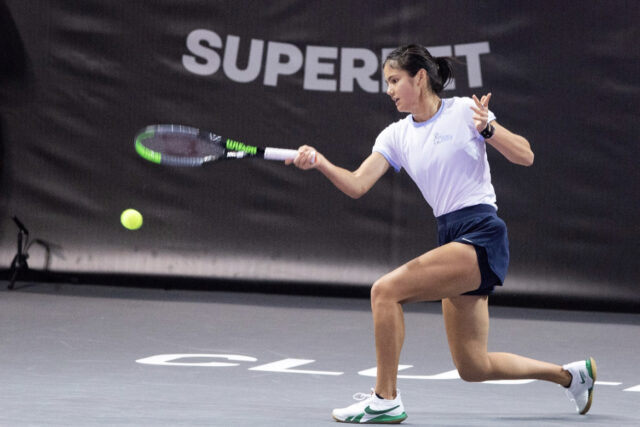When Emma Raducanu won the US Open in 2021, it was scarcely believable. Coming through qualifying before going on to win the tournament was a feat that had never been achieved before at one of the major tournaments, and the scale of her success was barely comprehensible.
However, after parading the trophy and celebrating with her team, life continued for Raducanu. As she moved on from New York, she did so without her coach, Andrew Richardson. Richardson had been given a contract until the end of the tournament, and it wasn’t extended despite her success.
It wasn’t the first time such a decision had been made. She had been working with experienced coach Nigel Sears in the build up to Wimbledon. Her fourth round run at the tournament was the moment she first catapulted herself into the wider public consciousness, but Raducanu and Sears split ways afterwards. Although it was a surprising decision, Richardson came on the scene in his stead.
The trend has continued. Torben Beltz was handed the role in November, but he was gone by April. Raducanu went on to work with the LTA’s senior team. She explained, “I feel the best direction for my development is to transition to a new training model with the LTA supporting in the interim.”
Iain Bates, the head of women’s tennis at the LTA has been travelling to tournaments with Raducanu, but Louis Cayer, the LTA’s senior performance advisor, is seen as having most of the technical input on Raducanu’s game.
Cayer is well regarded by many in the game, due primarily to the level of detail he provides. His video analysis sessions have been credited with improving the game of many players he has worked with in the past. Raducanu’s technique has noticeably improved in the tournaments leading up to Roland-Garros, and her recent showings have improved her odds on Betdaq exchange.
The constant coaching changes have raised eyebrows, and questions have been asked as to whether Raducanu is the real deal, or whether her US Open win was a fluke. While the latter isn’t an opinion that many would take seriously, it is notable that Raducanu has struggled to build on her US Open triumph.
In truth, it’s hard to know how much to read into this. She has certainly struggled on the senior tour, both with form and fitness. However, Raducanu is still a teenager, and will only turn 20 in November. The kind of inconsistency that she’s exhibiting is to be expected for a player of her age and experience.
It’s widely known in the sport that Ian Raducanu, Emma’s father, has an outsized influence on the setup of the team around her. That’s not uncommon for a young player. Nevertheless, the family’s constant coaching turnover is still curious.
It’s an approach that has divided opinion. Some argue that the Raducanu approach is a smart one, learning from as many different sources as possible early on in Emma’s career, to set her up more strongly for long term success. Others suggest that it’s unsustainable. If Raducanu wants to feature at the top level of women’s tennis for the next decade, it’s simply not possible to go through half a dozen coaches a year.
Both sides probably have a point. The regular changes of coach are almost certainly not responsible for her inconsistent form, as detractors may suggest. However, Raducanu will likely need to settle down and start thinking longer term with her coaching choices after her debut year on the circuit has finished.
Raducanu’s struggles are par for the course for a player of her age, but she’s also achieved less than is expected from a Slam champion. Her early success, and the scrutiny that has come with that, has placed her under the microscope. That being the case, the young Brit carries herself well, and doesn’t seem overly affected by outside noise. The Raducanu family look set on continuing with their approach, and if it pays off then they’ll have proved the doubters wrong.




